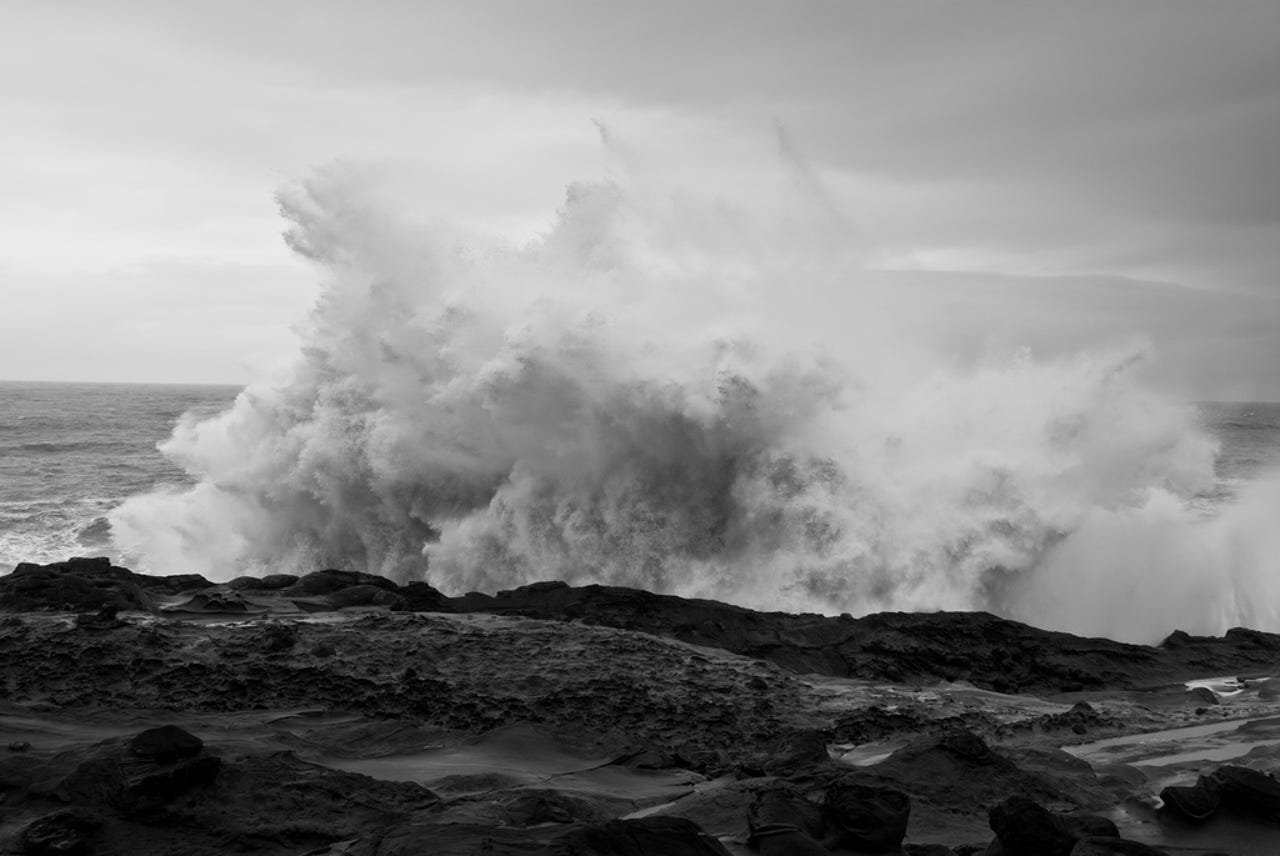Innovation
Why wave energy isn't powering our planet
In theory, energy collected from the oceans could provide much of our electricity needs. In practice, it's much more difficult. Here's why.


Among the mix of renewable energy sources, collecting energy from the movement of the ocean seems like it should be a sure thing. It has the benefit of being abundant, constant, and predictable, all good qualities when you're looking for a new energy source. The U.K. alone believes wave and tidal power (there's a difference) could meet 75 percent of its current electricity needs.
So why isn't marine energy powering our planet yet?
As renewable energy sources, like solar and wind, become a greater part of the energy mix worldwide, marine energy is struggling to develop at the same rate.
One of the latest setbacks comes from Ocean Power Technologies which had to abandon a buoy project that would have captured enough energy from the ocean's movement to power 100 homes. The problem? Higher-than expected costs, The New York Times reports. And with "only a few" other projects even in the planning stages, the marine power potential seems to be greater than reality.
Even the World Energy Council, which has estimated that energy from oceans could one day provide double the current electricity needs worldwide, has its doubts. In a 2013 report, WEC said: "It remains to be seen if the 'cost down' curve is such that technology will achieve the scale necessary to make [marine energy] a significant global contribution to electricity production."
So what's holding back the industry?
At Yale Environment 360, Dave Levitan has some ideas. One of the main issues: the industry has yet to agree on an optimal design like, say, wind energy. And that makes it hard to scale and bring down costs.
As Levitan writes:
A recurring theme among wave power experts is that wave energy is where wind energy was three decades ago. At that time, engineers had not settled on the optimal design for wind turbines, but decades of ensuing research have resulted in highly sophisticated turbine designs. With wave power, some research occurred after the Arab oil embargo of the 1970s, but since then government and commercial research and development into wave power has paled compared to wind and solar energy.
Another setback is that marine energy has yet to secure the amount of investment needed from large companies -- like GE has done with wind -- to make marine energy a commercial reality. The reason, according to Levitan: "Those companies may be waiting for the technology to sort itself out before investing, a common dilemma in any nascent field."
And, of course, the ocean is a challenging environment -- with its corrosive salt water and damaging storms -- for any industry or technology.
There are some promising signs that the industry is moving forward. Lockheed Martin announced that it is teaming up with Ocean Power Technologies to build the world's largest wave energy project (62.5 megawatts) off the Australian coast. And places like Scotland and Oregon continue to invest in development of marine technology.
Still, all of this represents more potential than commercial demonstration.
Photo: Flickr/kightp
Related on SmartPlanet:
This post was originally published on Smartplanet.com